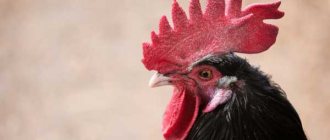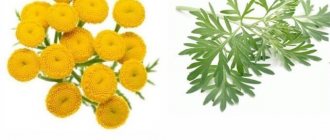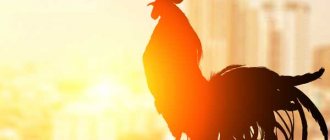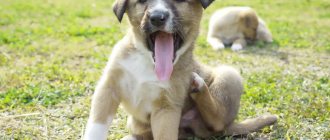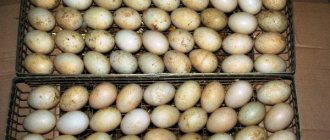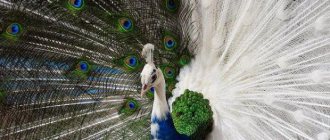The dislike of bulls for the color red seems to be a proven fact. It’s not for nothing that a bullfighter waves a bright cloak (kapote) in front of the animal’s nose to force the animal to attack. There is even such an expression as a red rag for a bull. In addition, in almost all cultures this color symbolizes aggression and strong feelings.
As it turns out, there is much more speculation than truth in the theory about bulls and the color red. Therefore, we tell you how things really are.
Destruction of the myth
In 2007, Discovery Channel's Mythbusters tested a live bull in three separate experiments. Their goal was to find out why bulls don’t like the color red and whether this is actually true. The essence of the first experiment was as follows: three stationary flags of red, blue and white were installed in the arena. The animal attacked all three, regardless of shade. Next were three mannequins, and again the indiscriminate bull left no one unattended. Finally, the time has come for living people. There were three people in the arena, the one in red stood motionless, the other two cowboys moved in a circle. The bull began to chase the moving daredevils, but ignored the motionless “red” one.
A little background on bullishness
Most modern bulls have a rather hot-tempered and irritable disposition. The aggressive behavior of adults is explained by their genes. These animals are the ancestors of the ancient wild aurochs, which previously inhabited forests and forest-steppes throughout Europe, North Africa and Asia Minor.
The tours were significantly different in appearance from their contemporaries:
- some individuals could reach one ton of live weight;
- had huge powerful horns;
- they had very hard and impenetrable skin.
A stern appearance and a strong disposition were necessary for the aurochs to protect themselves from wild predators. In addition, his hot-tempered character helped him win battles with other tours for the cow he liked.
All these characteristic inclinations were inherited by modern herbivores and predatory animals. At the same time, herbivorous bulls are endowed with a more pronounced irritable disposition. Living in close-knit herds, they had to defend their positions every day and fight for a tasty morsel of food.
Why don't bulls like red?
Spanish matadors began using a small red cape in bullfighting in the early 17th century. Since then, people have probably decided that it is this shade that turns a peaceful animal into a real beast. The fact is that scarlet shades can disguise blood, and sometimes there is a lot of it on the battlefield. Why don't bulls like red? Does he scare them, irritate them? Will they react so violently to blue or, for example, green? In fact, this is not a matter of psychology or physiology; animals don’t care: they only react to movements when they feel that something might threaten them.
Features of cattle vision
In order to find out what colors bulls perceive, it is necessary to know the features of the visual organs of these artiodactyls.
The structure of the eye of representatives of cattle is in many ways similar to that of humans. Consisting of the vitreous body, lens and membrane, it is connected to the brain via the optic nerve.
The eye shell is conventionally divided into three types:
- External - includes the cornea and sclera. The sclera is attached to muscles that allow the eyeball to move in the orbit. The transparent cornea conducts light reflected from objects to the retina.
- Middle - consists of the iris, ciliary body and choroid. The iris, like a lens, directs light from the cornea into the eye, regulating its flow. In addition, the color of the eyes depends on its pigment. The choroid contains blood vessels. The ciliary body ensures the activity of the lens and promotes optimal heat exchange in the eye.
- The inner, or retina, transforms the reflection of light into a nerve signal going to the brain.
The light-sensitive cells that are responsible for color perception are located in the retina of the eye. They are rods and cones. Their number and location determines how well the animal sees during the day, how it navigates in the dark, and what colors it perceives. Scientists have found that bulls and cows can see in the green, blue, yellow, red, black and white spectrum, but the saturation of these colors is very low, and their shades in the perception of animals merge into a single tone.
However, this does not prevent these mammals from fully existing, since they do not rely on color to survive. Much more important for them is the ability of panoramic vision. Cows, unlike humans, due to their somewhat elongated pupils, can see 330° around them. In addition, they react faster to movement compared to humans.
As for the range at which bulls are able to see certain objects, it does not differ in length. These animals have a blind spot at a distance of up to 20 cm from the tip of the nose - they simply cannot see objects in this area. In addition, the clarity of distinguishing objects is lost beyond a radius of 2 - 3 m from them.
Another feature of these artiodactyls is night vision. With the onset of twilight, cows' vision sharpens hundreds of times, which allows them to notice in time hypothetical predators that hunt mainly at night. Moreover, in the dark, the eyes of cows and bulls tend to glow, like a cat’s, due to a special pigment that refracts light in a special way.
Color doesn't matter
The color is what viewers pay more attention to than the bull. Firstly, richly embroidered costumes and red capes are considered an important part of the culture and tradition of bullfighting. Just as sports teams always wear the same colors, scarlet capes are seen as part of the bullfighting uniform, not because bulls don't like red. The reasons are also practical. Bullfighting is one of the most popular and controversial customs in Spain. Often this exciting action ends with the death of the bull, and the red color, although not much, masks the already cruel performance.
Diagnosis and treatment
The Ishihara test contains a series of images consisting of colored spots. The figure (usually Arabic numerals) is embedded in the design as dots of a slightly different shade, which can be distinguished by people with normal vision, but not with a certain type of disorder. The full test involves a series of images with different combinations to reveal whether the disorder is present and specifically what colors colorblind people cannot see. For children who do not yet know numbers, drawings with geometric shapes (circle, square, etc.) were developed. Diagnosis of anomalous trichromasia can also be made using an anomaloscope. Currently, there is no effective treatment for color blindness in humans. Colored lenses may be used to improve the ability to see some colors but make it more difficult to see others correctly. Scientists are conducting trials to treat color blindness using genetic engineering methods, which have already yielded positive results in a group of monkeys.
The bull attacks the one who moves
The question “Why do bulls react to the color red?” is not entirely correct, since they do not distinguish this color, and also green, at all. Movement makes them angry. Moreover, the bulls participating in bullfighting come from a very aggressive breed (El Toro Bravo). They are selected in such a way that any sudden movements can infuriate them and force them to attack. Even if the cape is a calm sky blue color, the bull will still attack if it is waved in front of his nose. Therefore, if a matador is dressed in red and stands still, and another matador is dressed in any other color (even white) and begins to move, the bull will attack the one in white (the one who is moving).
Types of color blindness
The classification of types of color blindness (color vision pathologies) is based on which of the primary colors the patient does not see or has difficulty distinguishing.
Protanopia
(from the Greek protos - first, since red is conventionally considered the first color) - impaired ability to see red. This genetic mutation is more common than others. People with protanopia, looking at red objects, see them as brown, dark gray, black, and less often dark green. They perceive green as light gray, yellow or light brown.
Deuteranopia
(from the Greek deuteros - second) - pathology in the green region of the spectrum. Instead of green, a person with deuteranopia sees light orange or pink, and perceives red as brown.
Tritanopia
(from the Greek tritos - third) - allows you to see red and green with all their shades, which replace the blue part of the spectrum. The inability to perceive blue and violet is not the only defect in tritanopia - the pathology affects the functioning of the rods and leads to the absence of twilight vision.
Color blindness can be classified according to the degree of color vision impairment, depending on whether the pigment in the cones is completely absent or its amount is only limited and insufficient for full, bright vision.
Normal perception of primary colors is called trichromacy. A person who can distinguish all colors, but they appear faded and lack sufficient contrast, is diagnosed with abnormal trichromacy. If vision in a certain part of the spectrum is impaired, but not completely absent, the mutation is named according to the color affected: protanomaly, deuteranomaly or tritanomaly.
Dichromasia
assumes that the eye distinguishes two primary colors and does not perceive the third, replacing it with shades of the first two. Within the framework of dichromasy there are protanopia, deuteranopia and tritanopia.
A person with monochromasia
vision distinguishes only one of the primary colors. This mutation is often accompanied by photophobia and nystagmus.
Achromasia
(color blindness) is a rare phenomenon associated with the absence of the pigment responsible for color vision. The world in the eyes of a person with achromasia looks black and white with shades of gray and is completely devoid of other colors.
Sometimes nature compensates for the inability to see one color with a more subtle perception of another. For example, people with protania can see more shades of green than is possible with full trichromatic vision.
"Like a bull on a red rag"
Many people still believe that as soon as a bull sees something red, his eyes will immediately begin to fill with blood, he will begin to breathe heavily and scratch the ground with his hoof, and then, worst of all, a powerful beast will rush headlong towards the one who is killing him. annoys. There is even a saying: about someone who quickly becomes angry, they say that he reacts like a bull to a red rag. However, this is nothing more than a misunderstanding.
It doesn’t matter what color the rag is: if you move it and the bull notices it, then at first he will simply be wary, but if you start waving it in all directions, then expect trouble. This is a common defensive reaction. The animal perceives movement as a threat, and has no choice but to defend itself. By the way, if you wave a white cloth, the effect can be even more noticeable, since this color is brighter than red and the bull will see it faster.
Description of the breed
Animals of the red-and-white breed have a compact, muscular body. The exterior is characteristic of individuals with a meat orientation. Straight back, large head, short neck, short limbs. The sides are large, but not convex. The muscles on the thighs are visible through the skin. A red-motley bull has a noticeable hump on its neck. There are numerous skin folds on the chest. The animals have small horns facing forward.
- The weight of an adult bull is 1.1 tons. A cow is up to 600 kg. Slaughter yield of meat is 65%.
- The calf is born large, up to 45 kg. Young animals quickly gain weight: up to six months, 1500 g per day. By the age of six months, the weight of bull calves can reach 270 kg. Chicks don't grow as fast. Their weight by 6 months approaches 200 kg. At 12-14 months, bull calves are put into fattening.
- Animals are not considered precocious. The first insemination of heifers is carried out at the age of 31 months. During her life, a cow experiences 14 calvings. Cows can give birth to twins. Experts say the probability is 5%. Attracts short intercalving period. A new insemination is carried out on a cow 87 days after calving.
- They get a little milk from the red cow. During the first lactation she produces 540 kg of milk, during the second - 700 kg of milk. Milk yield increases after 3 calvings. From a milked individual during the lactation period you can get up to 5 tons of milk. Fat content 4.02, protein content 3.11%. Similar results are produced by a meat and dairy cow.
More on the topic: How long is a cow's intestines?
The Simmental breed is common in European countries. Holstein animals - in the USA, Canada, Europe. The new red-motley breed has gained recognition in the regions of Russia. Animals are raised in the Central Black Earth, Volga-Vyatka, and West Siberian regions.
Using aggression for fighting purposes
The aggressive nature of the quadrupeds was often used by young men to play with danger. Hunting them requires courage, dexterity, and psychological stability. Bullfighting lovers do not hide in the bushes, fight bulls face to face, and hone their bullfighting skills. Finding himself locked in the ring with a horned one puts him in danger and faces a battle that could result in serious injury or death.
If bulls are color blind, what is this rag used for in a bullfight? The matador hides behind it, distracts the animal, waves a rag, standing motionless, the bull attacks. The animal does not distinguish what is in front of it; in a fit of rage, it attacks everything that moves. If you stand still and don’t move, the bull won’t attack. This is due to the fact that at the gene level he reacts to trees, understanding what will happen if he hits the trunk with his head from a running start.
A moving target is perceived as an object of aggression, which itself runs into pain and causes pain to the animal. After a wave of the red rag, the horned one attacks, the bullfighter stands motionless. You can understand this if you carefully observe his actions at the bullfight. People enjoy a fascinating spectacle; a brave hero alone fights a powerful, dangerous animal and defeats it.
Freud's Dream Book
Sigmund Freud, explaining what the little red bull promises, suggests remembering exactly where you observed it:
- in your own home - you are completely satisfied with your marital relationship;
- in the middle of the city - you are lost in choosing between several fans;
- on the farm - one of the friends may “move” into the category of “second half”;
- on public transport - you change sexual partners like gloves.
Classification of cows
It was the Russian animal scientist P. N. Kuleshov who first proposed distinguishing cows by body type at the beginning of the 20th century. He proved that with the increased development of one system of a domestic animal’s body, others are suppressed. With developed bones and skin, internal organs and muscles are usually depressed. Muscle development inhibits bone and hair growth.
According to Kuleshov’s classification, there are four types of cows:
The four main types are mixed together. For example, animals combine traits of the tender and loose or tender and dry types.
Based on external characteristics, the following areas of cattle productivity are distinguished:
The meat-dairy type has exterior defects that reduce the value of the meat: due to the deflection of the back, the amount of pulp decreases, and there is no fatty layer in the meat. Pure beef cows produce marbled meat with thin stripes of fat. Mixed cattle are often raised to produce milk. Classification of domestic cows by origin:
Based on the length of the coat, short-haired and curly-haired breeds are distinguished. Felt and felt boots are made from cattle pile.
